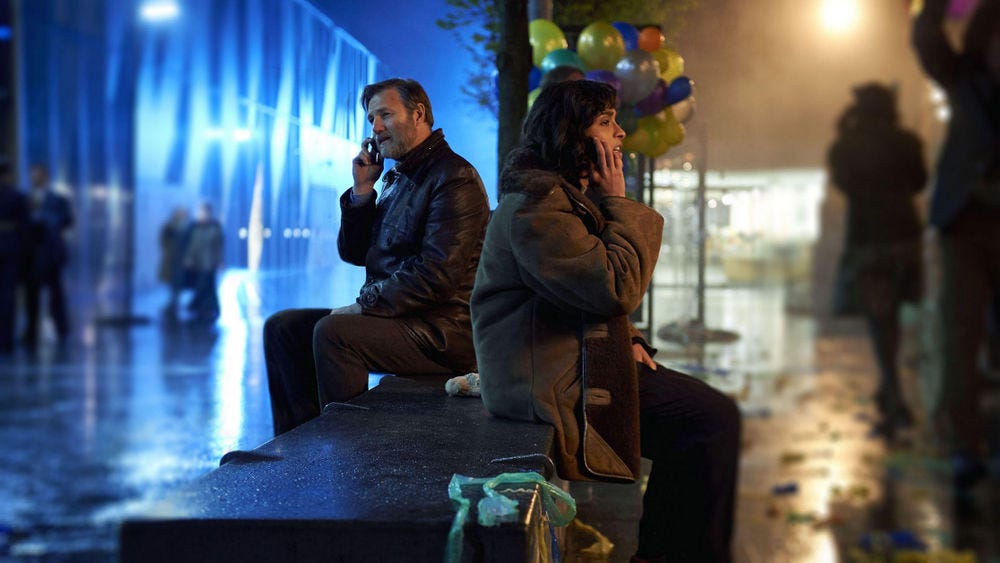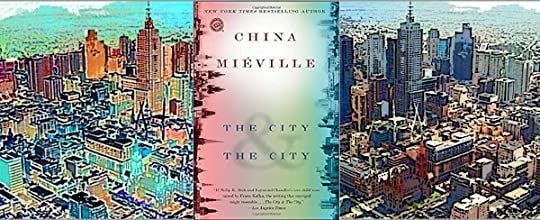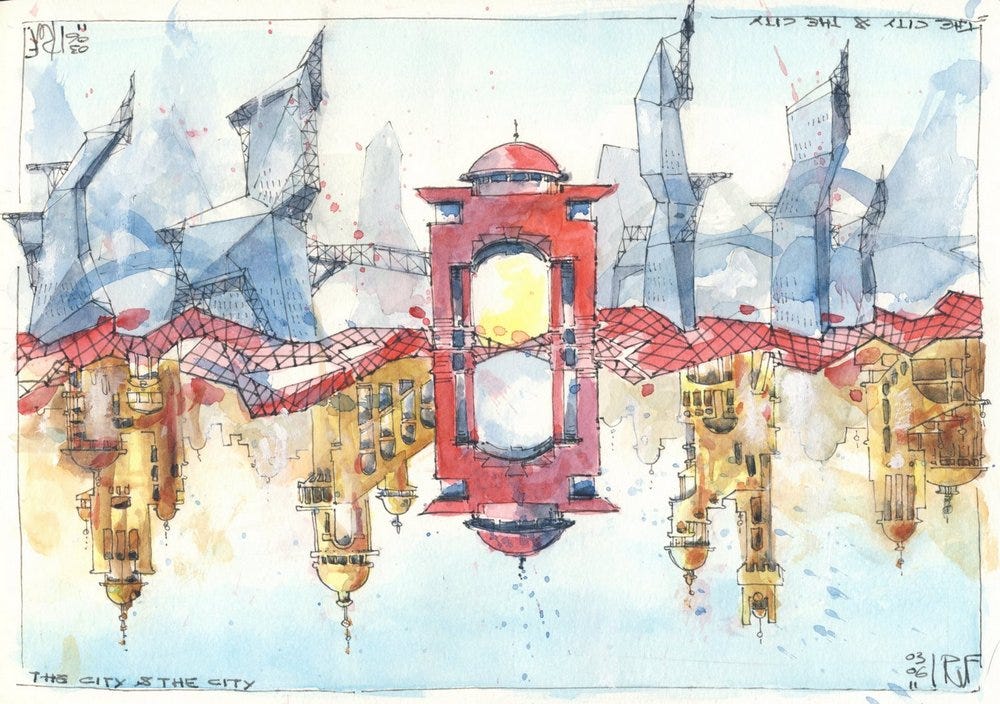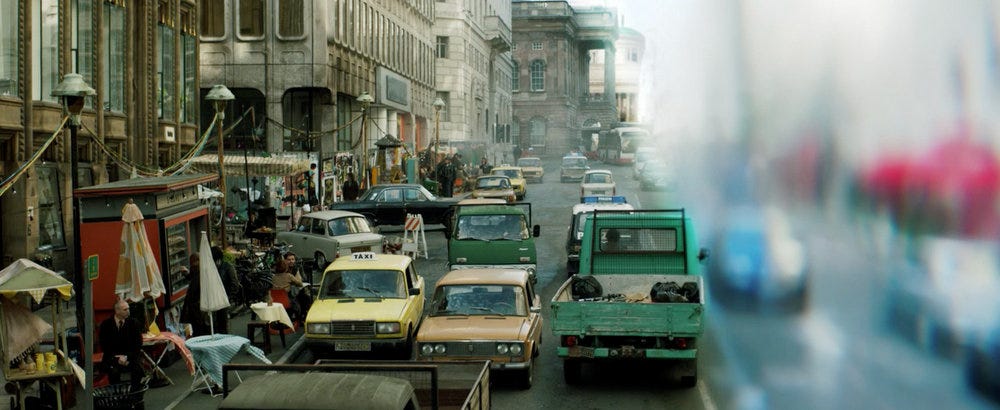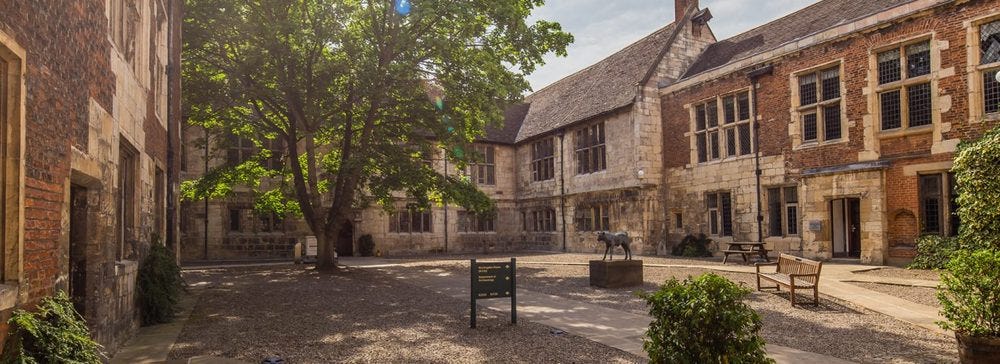Hello! This is Everything Is Amazing, a science newsletter that pokes & prods at the everyday world with curiosity and wonder and the reckless joy of doing things for no immediately apparent reason. I am currently emerging from my second exciting journey into the feverish and over-bright land of COVID-19 reinfection - it’s been mild so far, and I’m both grateful to the Scottish NHS and cautious of my own complacency (no planning of trips to the gym for the moment, lots of naps, maybe not looking at the news quite as much, and so on). I’ll be back again in a couple of days. But in the meantime, I thought I’d rerun the newsletter that started Everything Is Amazing back in January 2021: a call to arms for living a more curious life with the help of some mind-bending science fiction. (I nearly said “other-worldly” - but considering the current state of things, all bets are off.) So, once again - welcome! This is a newsletter about exploring the hidden worlds around you, so I’d like to start with the most appropriate literary metaphor I know. When I first heard the rough premise of China Miéville’s 2009 novel The City & the City, I felt disappointment. Oh no. THAT old chestnut? I thought he was more inventive than that? When the book was recently adapted by the BBC into a flashy four-part drama (pictured above), I didn’t make any effort to catch up with it on iPlayer. I thought I already knew the ground its source material was treading - and the whole thing bored me senseless. I am usually rather wary of the “mirror universe” trope in science fiction, especially on TV. At its very worst, it’s an excuse for creating cartoonishly “bad” versions of beloved characters by dimming the lights, sticking them all in figure-hugging black leather and making them tediously aggressive and shouty. Done like this, it becomes disappointingly predictable. We know each side is there to throw the other into ironic contrast. We know that one side is the world of baddies, a whole universe of wannabe oppressors, and the other is our heroes defending normality. And we know it only ends in one way: with some gateway between the universes being closed (perhaps forever), conveniently tying up all loose ends by saying “I guess it’s that other universe’s problem now, LOL.” (Hat-tip to Fringe for being a show that did an entertaining job of rethinking this scenario. I’m grateful to have gone on that journey.) As a reader of sci-fi since the age of 8 (thanks, dad, for that copy of Isaac Asimov’s Foundation), I felt utterly mirror-universed out. Hence, my reaction to The City & the City. Yawn - what’s this? Two cities secretly in the same place? Blah blah. Oh please. The unofficial City & the City artwork around the Web seemed to confirm this assumption: Look, I know it’s a tried and tested plotline, and I know it never fails to find an audience. I get why these stories are popular! But they’re just not for me. In fact, I didn’t get it. Not at all. I’d missed the whole point about what makes this story so timely, so strange and so clever, and I hadn’t understood how it earns its place within a literary subgenre that’s come to be known as the New Weird. I hadn’t understood what this book was trying to show me.
There are no alternate universes in The City & the City. There’s no magical shimmering gateway between worlds. As a piece of speculative fiction, it’s unusual because it’s so thoroughly grounded in our everyday world - the world of infuriating bureaucracy, flaky internet speeds, plastic mobile phones and soulless municipal architecture. It’s a grimy urban setting that won’t just be familiar to lovers of Blade Runner, but also to anyone who has passed through the less attractive parts of modern London, New York, Tokyo, Athens, Istanbul, any big city really. In this sense, this is a story about the real world. Ours. Right here, right now. There’s an old city, see. Somewhere in Eastern Europe. A city that split in two, some time in its deep past - a little like Cyprus’s more recently divided capital city Nicosia/Lefkosia, which is where I grew up as a kid. (This may explain why this story has taken such a hold on my imagination.) These two halves of a former city, now called Besžel and Ul Qoma, have had centuries to dig their heels in, building structures deep into their societies that deny the legitimacy of the other to a literally mind-altering degree. If you are a citizen of Besžel, you have been trained from birth to only see Besźel. It doesn’t matter that Ul Qoma is right there across the street, as brightly lit and noisy as one side of any modern main drag. It doesn’t matter that some roads and paths go through shared “crosshatch” territories where the cities overlap, putting Ul Qoman buildings in your way, sending Ul Qoman pedestrians walking all around you… None of that matters, because you see none of it. You have been conditioned to only see Besžel - and to experience enormous mental discomfort if anything Ul Qoman catches your attention, as urgent as the pain that makes you yank your fingers away from a hot stove. Here’s the scene showing this in the BBC adaptation: 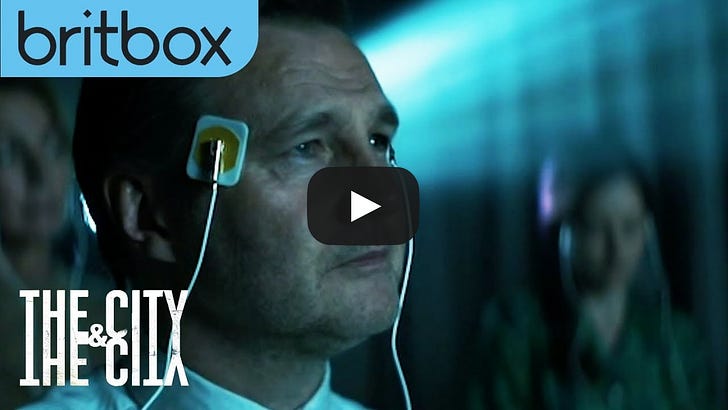 You can even be sat on the same bench in the same street as someone else (as in the image from the TV adaptation at the top of this article) - and because parts of that bench and of the surrounding street are divided up between Besžel and Ul Qoman, you’re in different cities, unable to even see, let alone talk, to one another. You might as well be in separate universes - even though you absolutely aren’t. Here’s an even more head-scratching example:
This is how the TV adaptation conveys the experience of this truly bizarre setup: This psychological conditioning isn’t enough, of course. It has to be enforced. If you are seen to be interacting with anything in the opposite city, you commit Breach - the highest crime you can commit as a citizen of Besžel or Ul Qoma. Within hours, maybe even minutes, you are picked up by a shadowy police force of the same name, bundled into the back of a van that doesn’t have Besžel or Ul Qoman plates so nobody can admit to seeing it - and then? Well, then you’re probably never heard from again. To acknowledge the existence of the other city except as an abstract idea is punishable by your own non-existence. In the scene I’ve quoted from above, Besžel detective Tyador Borlú is investigating a murder in a crosshatch area of his city. An Ul Qoman passerby catches his attention - and he instantly tries to “unsee” her, to filter her out of his mind. He tries. But he’s not as quick as he should be. He notices her. There’s clearly something amiss here. Perhaps the curiosity that his job requires is making him less and less affected by his lifelong brainwashing? Perhaps his keen mind is naturally rebelling against a society set up in a very inhuman way (the setup of many a great dystopian novel)? Perhaps, without being fully aware of it, he’s taking his first steps on a dangerous journey that will put him at odds with all his conditioning, the Besžel police force and even with Breach itself? Please read the book, because finding out is a mind-blowing joy. (Here’s a helpful guide to the story’s weird terminology.) This is a photo I took through an East Yorkshire bus window in 2012. I did a little light editing to this pic, but that’s more or less what I could see: a smudged, fogged, rain-spattered landscape, indistinct and mysterious, and utterly fascinating to me. Since I spent my teens in East Yorkshire, this was not how I generally felt about it (if you ever lived in a rural town you longed to escape, you know what I’m talking about here) so this was a revelation. I spent the rest of the journey squinting at everything going past, enjoying how alien it looked. How thrillingly new. It’s pretty common to hate the place you grew up in. Or maybe “hate” is too strong a word: say, to feel … less than charitable about its merits as an interesting part of the world to explore and show friends around. Perhaps not a sharp feeling but a dull one, a long-term emotional bruise. When somewhere feels overfamiliar, your wanderlust and desire for a more cosmopolitan life make you increasingly fed up about where you currently are, and maybe you engage in a bit of unseeing of your own. Your brain skips things, stops seeing what’s there, and interpolates what you think you already know into the gaps. I particularly noticed this when I studied a BSc Archaeology at King’s Manor in York. During my first term, every time I entered the department I would walk through this ridiculous gorgeousness (also available for conferences, I’m glad to say)… But after a month or two of attendance I walked faster, seeing less. And by my third year, it was an effort to see anything at all - at least, not in that astonished, slack-jawed way I had as a first-time visitor. There are sensible reasons we tend to tune stuff out over time. It’s a tricky thing to estimate our daily information diet these days (how much data input from a TikTok video, or a thousand absent-mindedly scrolled social media updates?) but we all know it’s overwhelming. Meanwhile, our thoughts seem to continue to flow at an stubbornly unhurried 10 bits per second. If we retained everything we took in, our minds would quickly seize up. Very sensibly, your brain keeps you mentally healthy by chucking away everything that it deems unimportant - including at point of entry, as shown by the unsettling consequences of Troxler’s Fading: Unfortunately, “everything it deems unimportant” is policed by a lot of things we’re not fully aware of. Things that we don’t necessarily choose. We’re deeply affected by our cultural biases. Or the opinions of our parents and our loved ones. Or the things we read (hi there!). Or the desire to socially fit in, online and offline, which gently nudges us in the direction of whatever we’re paying the most attention to. Or the urge to rebel, which does the opposite. So much of our sensory world is escaping our fullest level of attention every day – and because of all those biases at work, we can’t always trust our unconscious minds to choose the good stuff for us. What we need to do for our own good, in a way that’s safe, empathetic and socially responsible, is to learn how to Breach. Just a little, here and there. (If this sounds a bit “it’s all a conspiracy!!!” - please don’t worry! I may be an over-enthusiastic student in these things, but I try to follow credible science. Becoming more curious is the polar opposite of denying scientific consensus and engaging in wildly improbable speculation - there’s certainly too much of that kind of thing flying around right now as it is. This is about broadening your awareness, not narrowing it at the expense of rational thinking and basic common sense.) This, then, is the game that’s afoot in this newsletter. It’s as prosaic as taking a few minutes out of your day to do something a little unfamiliar, a little oddball, maybe even seemingly nonsensical (until you discover its value retrospectively)… And it’s as radical as deepening & widening the way you see the world, more and more over time, until at some point everything seems richer and more interesting and surprising - and, dare I say it, amazing? If you’ve enjoyed this and know someone else who might, I’d be grateful if you could let them know by clicking below! Ta. |
